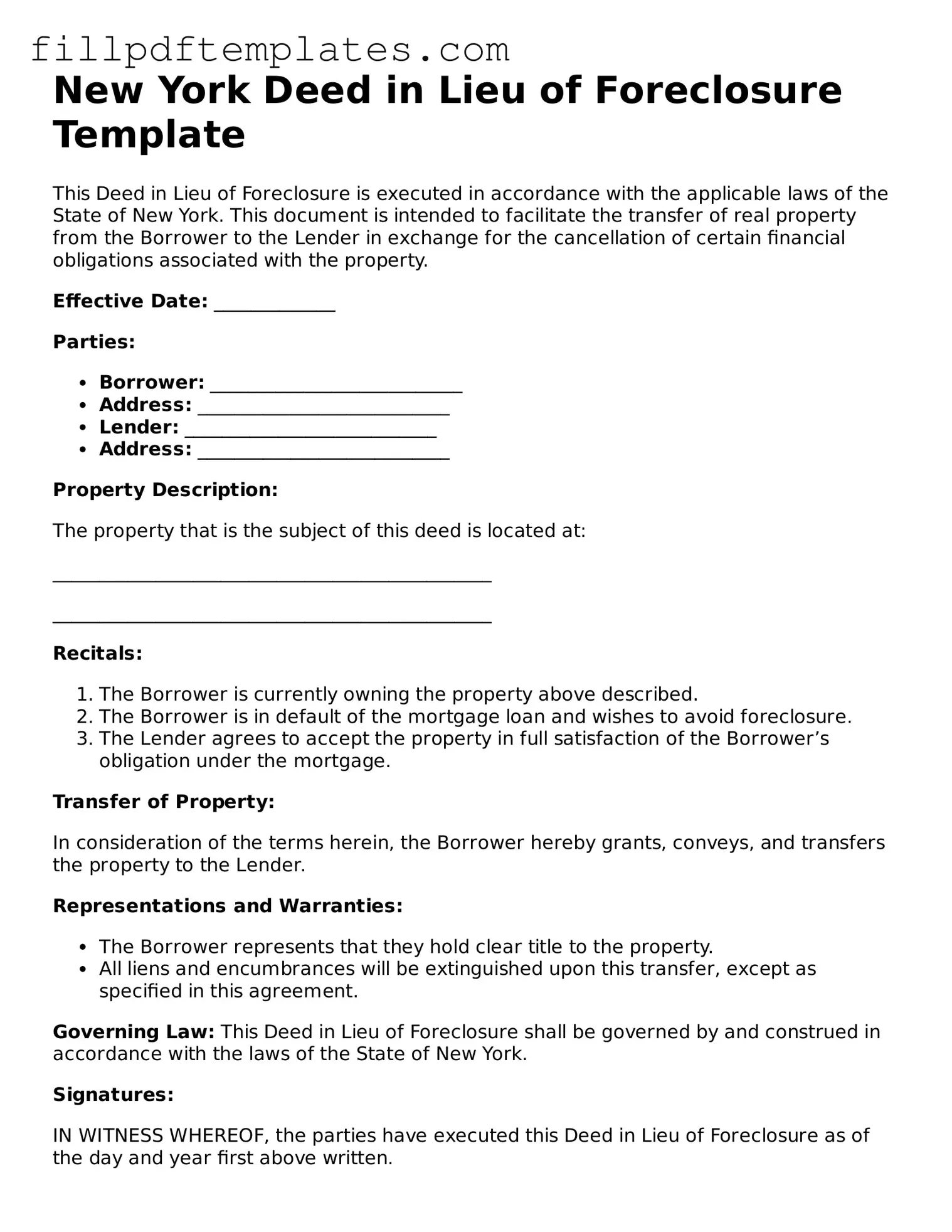New York Deed in Lieu of Foreclosure Template
This Deed in Lieu of Foreclosure is executed in accordance with the applicable laws of the State of New York. This document is intended to facilitate the transfer of real property from the Borrower to the Lender in exchange for the cancellation of certain financial obligations associated with the property.
Effective Date: _____________
Parties:
- Borrower: ___________________________
- Address: ___________________________
- Lender: ___________________________
- Address: ___________________________
Property Description:
The property that is the subject of this deed is located at:
_______________________________________________
_______________________________________________
Recitals:
- The Borrower is currently owning the property above described.
- The Borrower is in default of the mortgage loan and wishes to avoid foreclosure.
- The Lender agrees to accept the property in full satisfaction of the Borrower’s obligation under the mortgage.
Transfer of Property:
In consideration of the terms herein, the Borrower hereby grants, conveys, and transfers the property to the Lender.
Representations and Warranties:
- The Borrower represents that they hold clear title to the property.
- All liens and encumbrances will be extinguished upon this transfer, except as specified in this agreement.
Governing Law: This Deed in Lieu of Foreclosure shall be governed by and construed in accordance with the laws of the State of New York.
Signatures:
IN WITNESS WHEREOF, the parties have executed this Deed in Lieu of Foreclosure as of the day and year first above written.
Borrower: ___________________________________
Signature: ___________________________________
Date: _______________________________________
Lender: _____________________________________
Signature: ___________________________________
Date: _______________________________________
State of New York
County of ____________________ ss:
On this ____ day of __________, 20__, before me, a Notary Public in and for said State, personally appeared _______________________ to me known, and known to me to be the individual described in and who executed the foregoing instrument, and acknowledged that they executed the same.
Notary Public: _________________________________
My Commission Expires: _______________________
